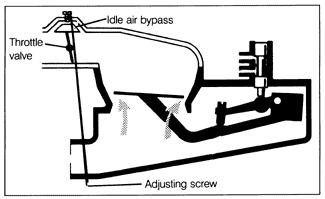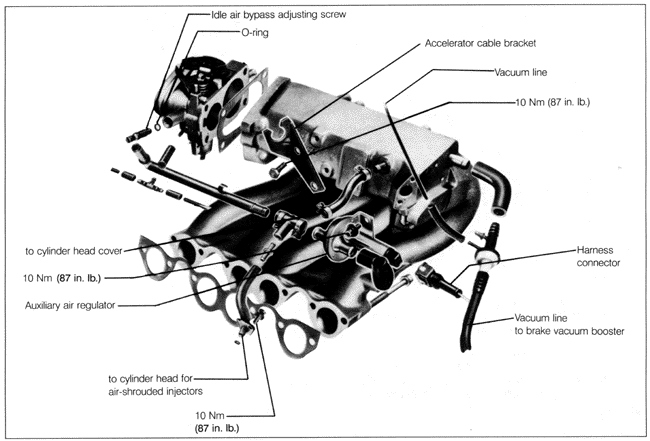5.4 Idle SpeedEngine idle speed is controlled not by a fine adjustment of the throttle valve, but by the idle air bypass controlling a small amount of air that is allowed to bypass the throttle valve. By this method, idle speed is more reliable, as it is independent of accelerator cable stretch or wear in the throttle valve mechanism. The idle air bypass is shown schematically in Fig. 5-13. The need for additional inlet air during cold running is handled much the same way, by the auxiliary air regulator which allows additional air to bypass the throttle valve. Fig. 5-14 shows the locations of both the idle air bypass adjusting screw and the auxiliary air regulator.

A separate component, the idle speed boost valve, maintains engine idle speed by controlling air flow to compensate for varying engine loads at idle due to, for example, high demands on the charging system. Cars with air conditioning have two idle speed boost valves.

|